My recent review of the Safari blue-footed booby motivated me to review another Suliforme bird that I featured in a comparison photo in that review, the 2020 Papo cormorant, which is also my most recent acquisition.
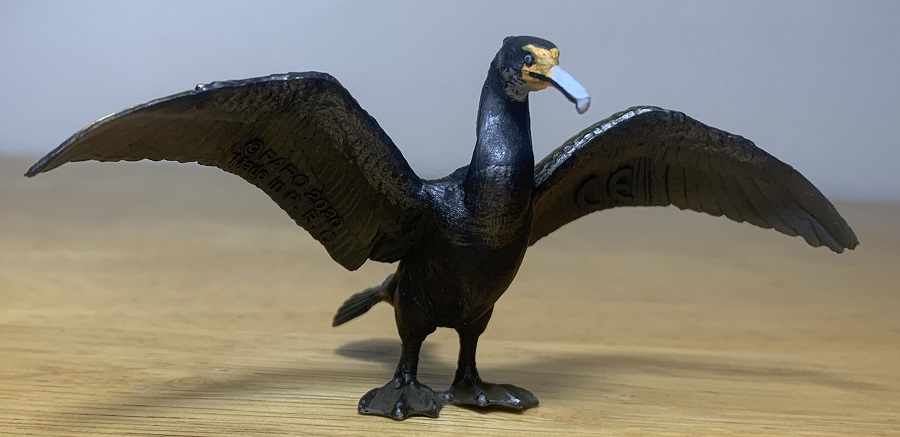
Cormorants, along with shags, make up the Phalacrocoracidae family, made up of about 40 species. They’re aquatic birds that hunt for fish by diving underwater and swimming with their webbed feet and wings. Living much of my life in the Great Lakes region, and now between the Atlantic Ocean and Chesapeake Bay, I am very familiar with cormorants. In both regions they’re a hot button issue and much maligned by fishermen who feel they’re overpopulated and causing a decline in fish stocks. In both regions it’s the double-crested cormorant (Phalacrocorax auritusthat) that is of chief concern, but today’s review is for the great cormorant (Phalacrocorax carbo) which is frequently encountered along the North-Atlantic coast of North America but is also found in Europe, Asia, Africa, and Australia. Interestingly, they mostly inhabit freshwater throughout their range but in North America they prefer saltwater.
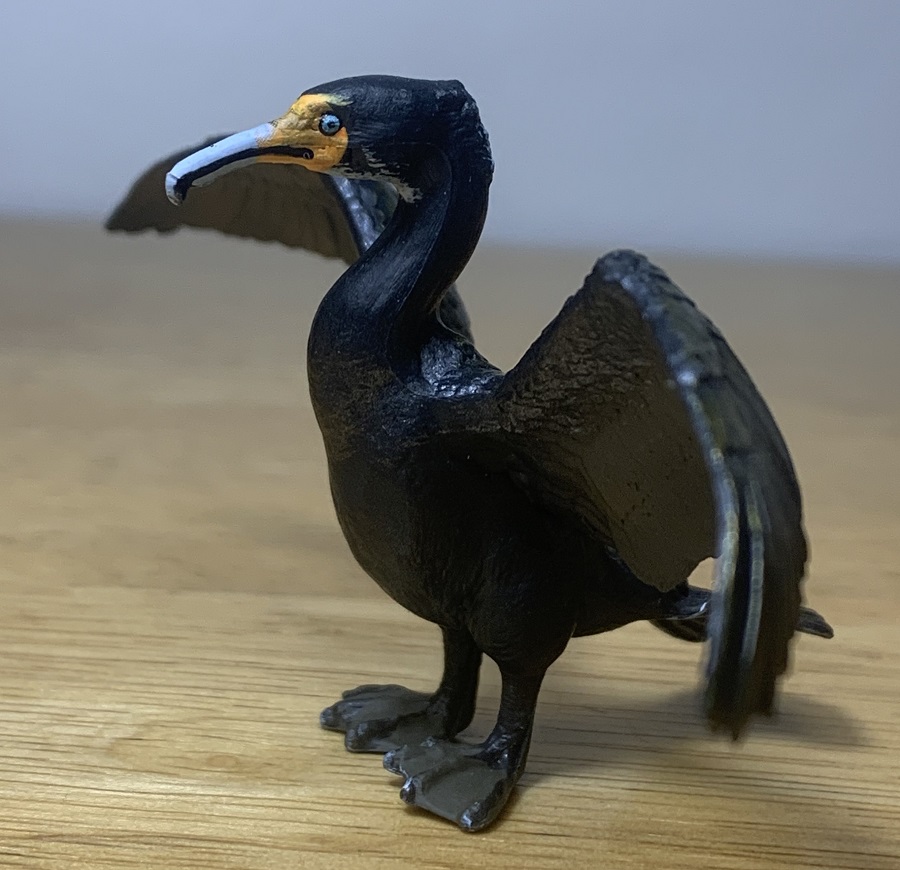
Although Papo doesn’t specify the species of their cormorant it can be identified as a great cormorant thanks to its white throat and yellow skin around the bill. During the breeding season, adults will have a square patch of white on the thigh, and white neck feathers. Those are absent here, so I guess it’s a non-breeding adult.
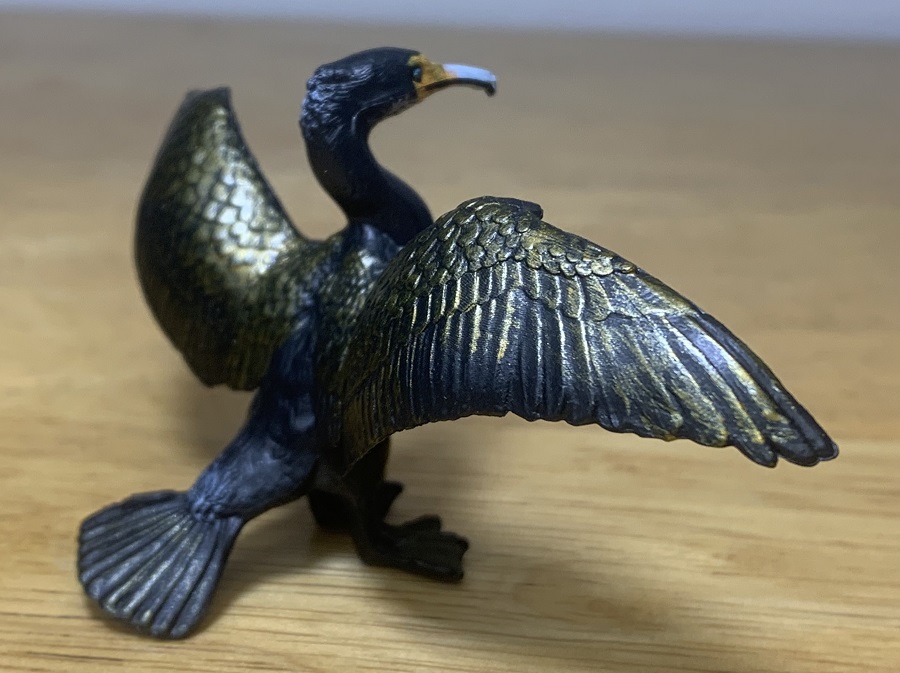
Although cormorants are unpopular among modern fishermen in the New World, they’ve been used for fishing in much of the Old World, historically. In China, Japan, and Europe, rings attached to tethers would be affixed around the necks of captive cormorants. This would allow the birds to swallow small fish but prevent the bird from swallowing large fish, which the fishermen would then retrieve upon the cormorant’s return. This fishing method is still used today in a few locales but it’s a dying art and mostly done to entertain tourists.
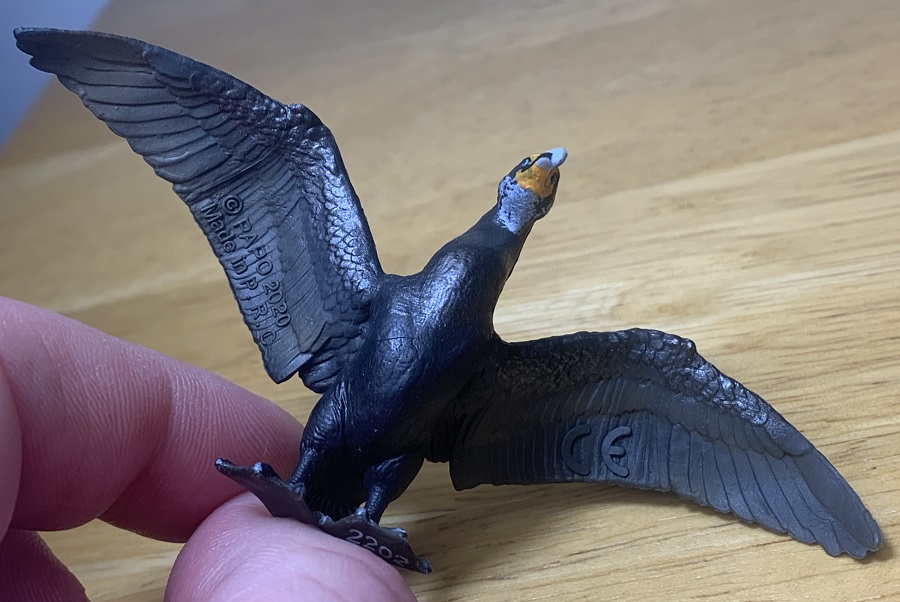
The Papo cormorant is a diminutive figure. Before purchase I assumed it was about the size of Safari’s various Wings of the World figures, but it is considerably smaller. It stands just shy of 2” (5.08 cm) tall to the top of the head, measures 2.75” (6.9 cm) long, and has a 4.5” (11.43 cm) wingspan. The size of the great cormorant varies with its distribution with weights ranging between 3-11 lbs. (1.3-4,9 kg) and males being larger than females. The wingspan can vary between 47.5” and 63” (120-160 cm). Using wingspan, the figure comes out to be 1/10-1/14 in scale.

The figure it posed with its wings outstretched. This is a common pose among cormorants who frequently rest this way, perhaps to dry their feathers or warm up. It has the hooked beak of an actual cormorant, a small crest on the back of the head, and four webbed toes. The feather detail on the wings and tail are excellent. The figure is entirely black aside from the white throat and yellow skin around the beak. There’s also a lovely metallic gold wash across the back of the wings. The beak is gray, and the eyes are blue.
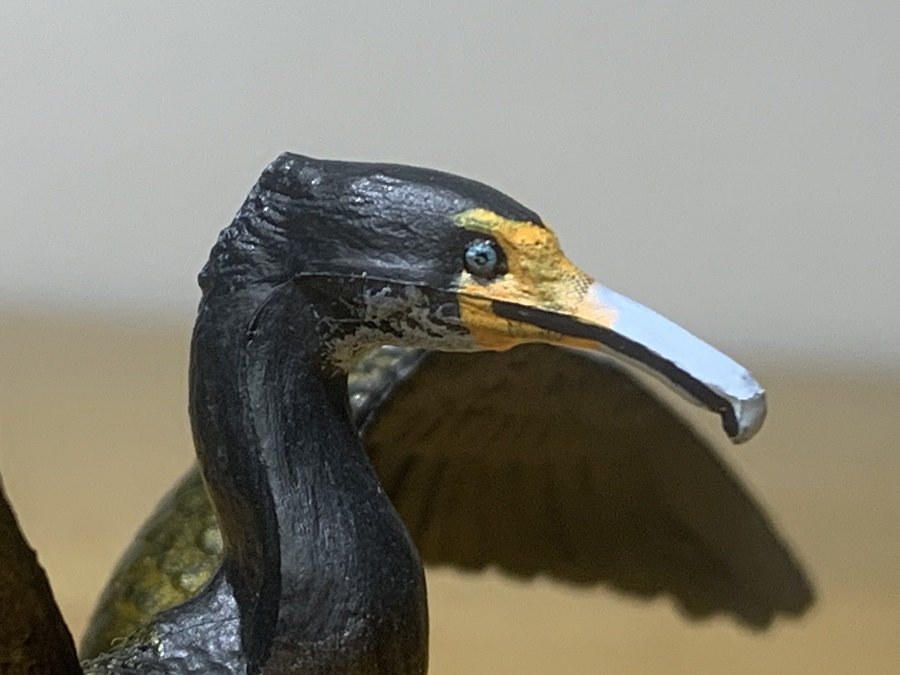
Unfortunately, I’m not entirely in love with this figure. The paint application on the head is a far cry from the crisp, clean paint app we see in promotional images. I especially dislike the black line painted across the mouth. It looks like a kid drew it on with a sharpie marker. Also, the beak is warped on my copy. I’ve tried to correct it with the hot/cold treatment, but it keeps sagging downward.
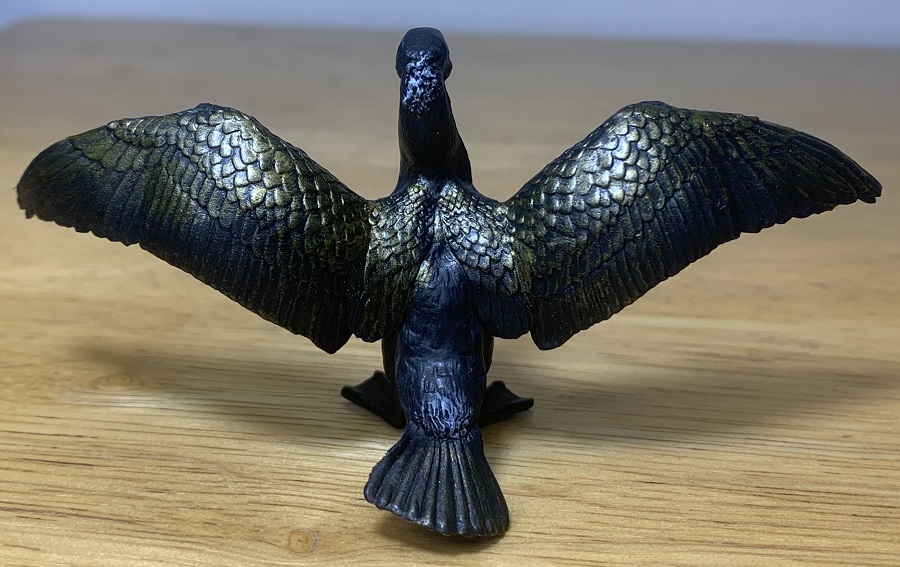
You should always use caution when judging a figure based on promotional images. Frequently, they’re better than the product you’re getting, and sometimes the promotional images don’t do the figure justice (this is common with Safari Ltd.). With this figure I couldn’t help but feel disappointed upon seeing it, especially after getting the excellent Safari blue-footed booby. That said, it cost less than $5 and aside from a discontinued Kaiyodo figure it’s the only great cormorant available and really, the only decent extant cormorant available at all. In the end, I’m happy to have it but I’m glad it was cheap.
Disclaimer: links to Ebay and Amazon on the AnimalToyBlog are affiliate links, so we make a small commission if you use them. Thanks for supporting us!



